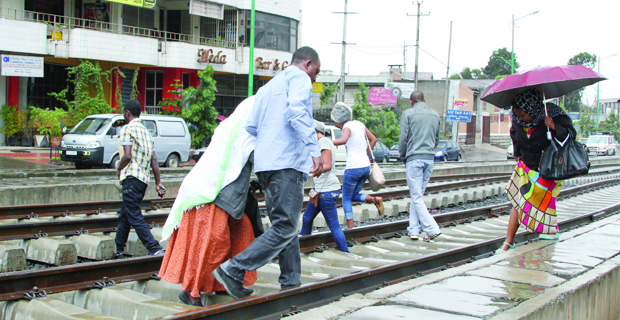A Bridge Too Far

Too far apart crossings & turnings creating anxiety among pedestrians, car owners alike.
Addis Ababa, Ethiopia –Â It was in 2011 that the Ethiopian government first set out to transform city transport in Addis Abeba, awarding a 475 million dollar contract to the China Railway Engineering Corporation (CREC). This was for the construction of a 31km double-track electrified light rail, as phase one of the total 75km planned for the city. The EXIM Bank of China extended 85pc in loans, while the government of Ethiopia covered the rest.
The project is well underway; nevertheless, the issue of pedestrian and car crossings seems yet to have been dealt with. People either jump over inconvenient barriers or walk a long way to cross over the rails; cars have to drive even longer.
The two-line rail tracks extend 16.99km from east-to-west, stretching from Ayat Village to Tor Hayloch, passing through Haya Hulet, Urael, Meskel Square and Lideta. On the north-to-south route, a 16.7km rail track will pass through Piassa (Menelik Square), Addis Ketema, Awtobus Tera, Sebategna, Tor Hailoch, Meskel Square, Gotera to the Kaliti Training Centre. The two directions will share a common track of about 2.7km.
The railway construction commenced by the Ethiopian Railway Corporation (ERC) on January 2012 has now reached 60pc completion, and the implementation of the railway tracks has begun.
The construction of the railway is taking place in three ways: 23km on ground level, 7.33km of bridge construction and 0.9km through underground tunnel construction.
The two lines share five stations. The average distance between two stations on the east-to-west route is 0.8km and on the north-to-south route 0.78km. Among the 39 stations, three of them are found in caves, nine of them on bridges and 27 on the ground.
Read more at: Addis Tribune



